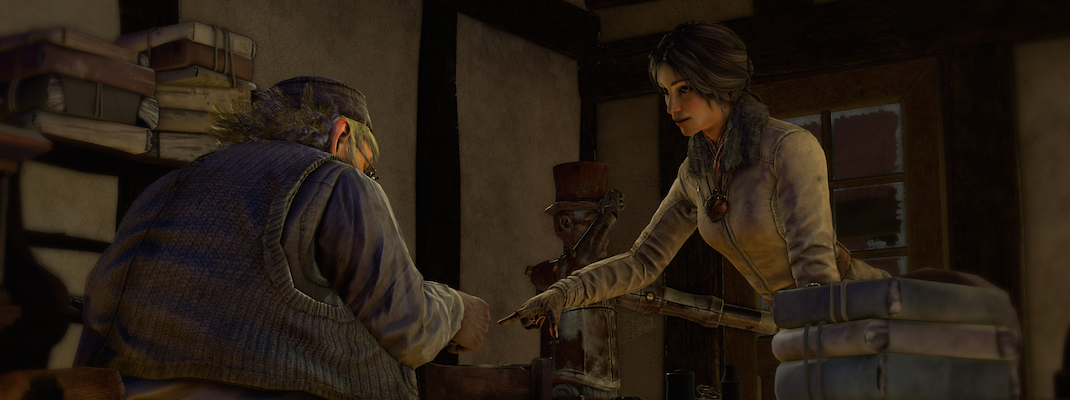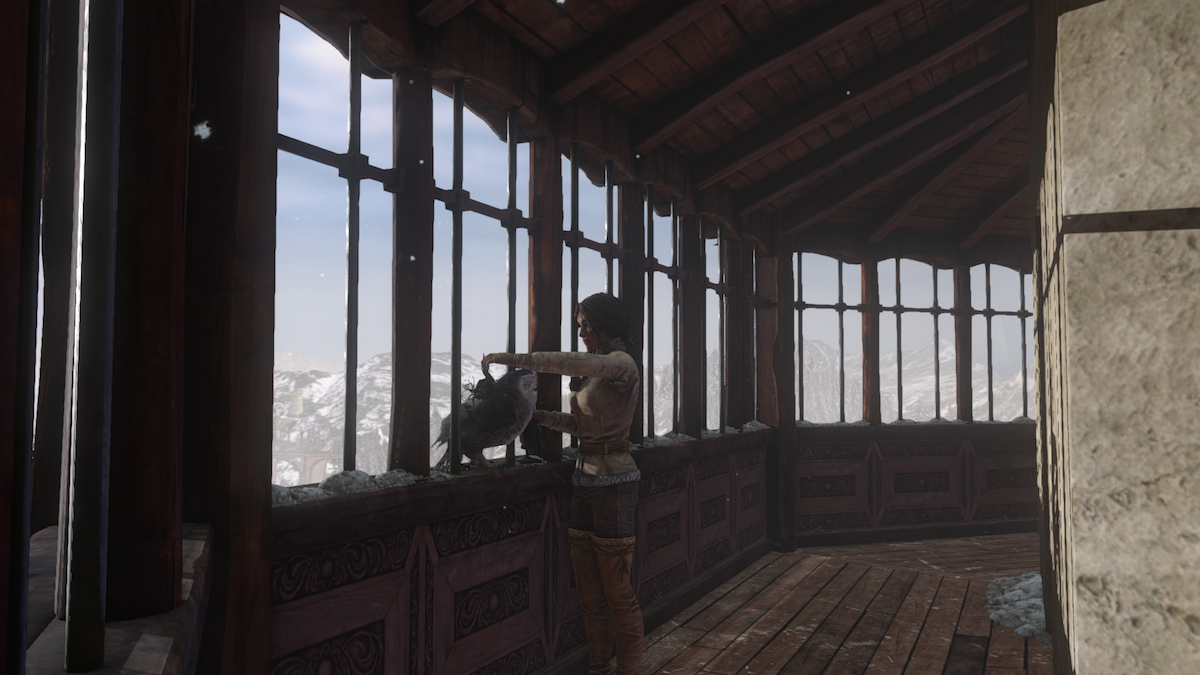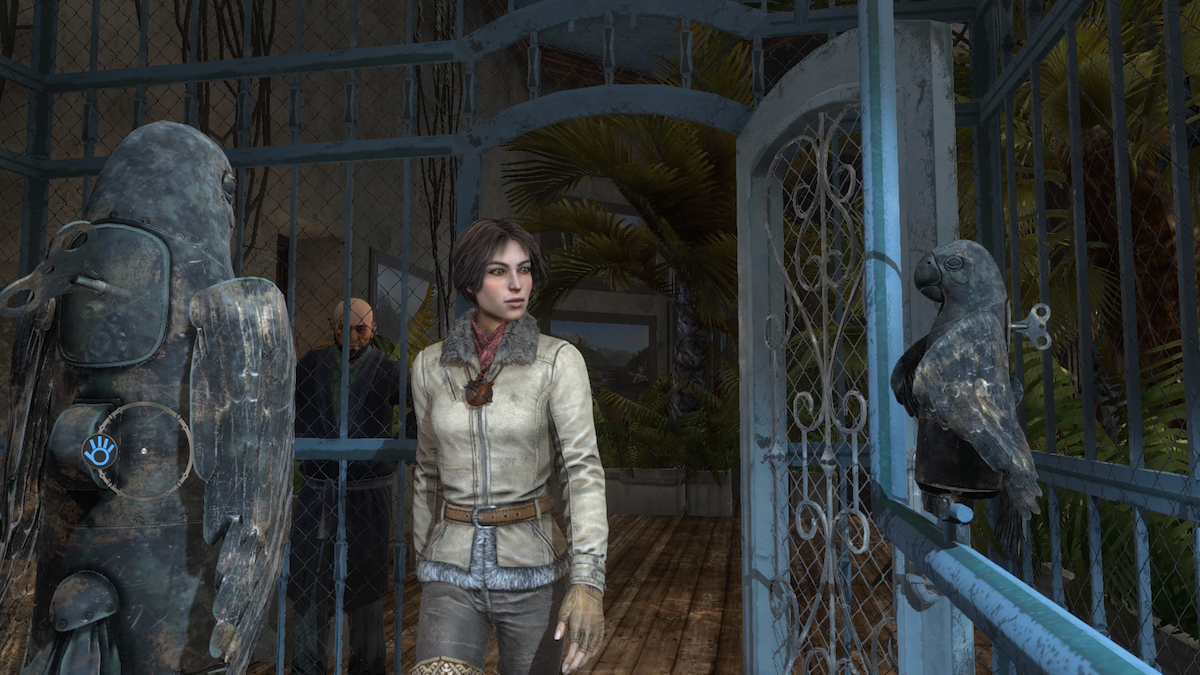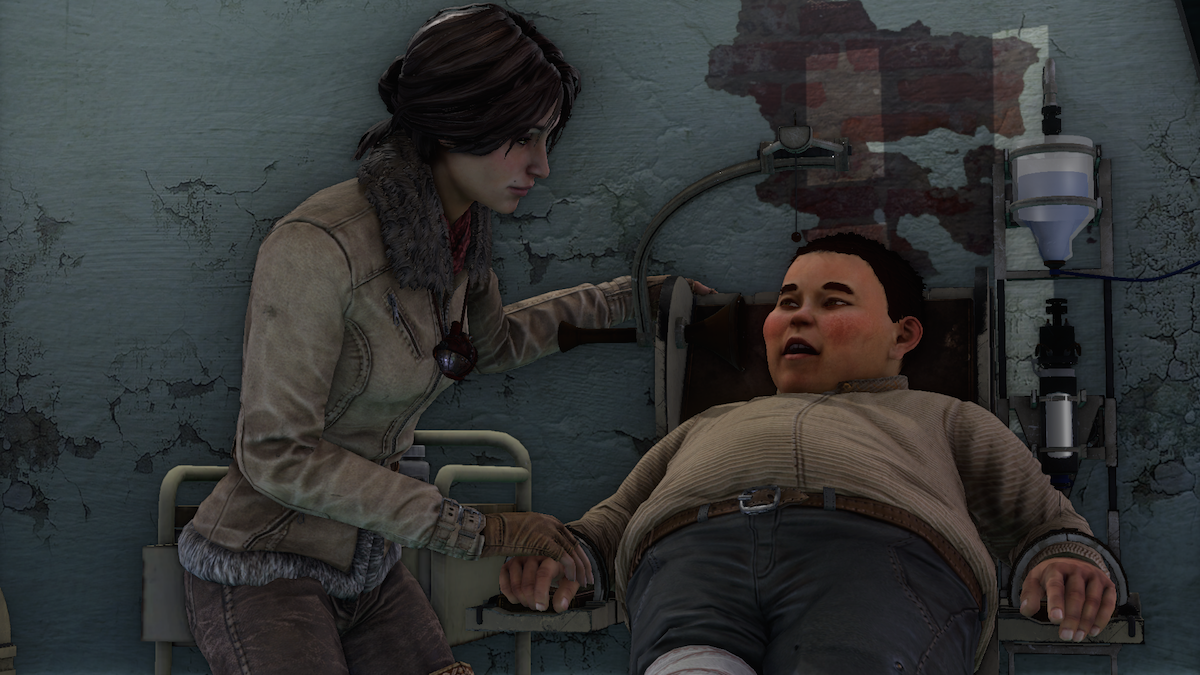Coming to Syberia 3 to see how the staggering twelve year gap has affected (if at all) the game's [thankfully] eventual finish point is like coming to a new album by a band having decided to reform for more than just the money. Sure you might appreciate the look of an old face (be they top of your list or not), the philosophies of simpler times and be hopeful that they can still craft something worthwhile, but for whatever reason, you're just not entirely sure how to feel. The original Syberia, which came out all the way back in 2002 on PC, came at a time when video games were beginning to make that fated transition from niche trade to cultural epicenter. Even still, as strict and specific its storytelling and general third-person, puzzle-solving presentation was, Syberia (and its sequel) was proof that you needn't try and tick as many conceptual or otherwise visual checkboxes to carve out something that could be entertaining, charming yet interesting to dissect on a thematic level. The distant past it may be and there's always concern that a series coming out of a decade-plus hiatus may still be feeling the after-effects of that most figurative of cryogenic slumbers.
A lot has happened in video games since Syberia 2 treated us to the follow-up adventures of now-former American lawyer Kate Walker -- her committed quest to help an old man live out a life-long dream, seeming to tie the two entries off in a reputable way at the game's climax. Never really closing the door completely on this fictional World of subtle steampunk and entertaining existentialism, but offering enough injected intrigue to carry Walker's story onward? Syberia 3's premise may well follow the in-tune specific flow as the previous two games -- here helping a tribe on their ancestral pilgrimage whilst getting caught in the resulting socio-political tug-o-war with a more authoritarian group -- but if there's one thing to take away from what lead artist/writer/developer Benoît Sokal and company have created this time round, it's the sense of awareness the team have in sprucing up the gameplay while maintaining most of Syberia's eery mystery.
Two scenarios were offered up to me during my time with the game: one hands-on, the other hands-off. The latter of which, coming first, showed off one of the game's later sections (around half-way through) and while it would be obvious -- and fairly mundane -- to point out such things as the completely 3D environments, improved textures and varying fixed camera perspectives you'd more than likely find in a Quantic Dream/David Cage end product, Syberia 3 thankfully makes great strides at not just freshening up its own identity, but also adding quaint little details and minor touches that actually compliment the puzzle-solving, adventure-led experience the game is built for. Be this the way 3D objects need to be analyzed in order to find a solution, similar to what Resi 7 did with its picked-up items (thankfully not some artist's smug attempt to go "hey look...look at how awesome a job I did at rendering this...stick...") or found items -- even if they serve a purpose in a puzzle -- still requiring players to figure out their intent; even the brief "failed" animations that have Walker realize combining x and y is wrong and doesn't in fact solve a puzzle.
It's these little inclusions that not only give the story and the characters' place in the world a bit more relation and physicality, but actually at points benefit the player in teaching them the importance in logically deducing how items can in fact be purposed. It's this same emphasis on logical thinking and deduction that pops up in other segments where a puzzle is not so much a combining of two objects, but rather requires the player to activate a strict set of actions in a certain order. An example being repairing a broken door by finding the circuitry; by which you find the lock that opens the box containing said circuity...but not before reading the nearby hand-written instructions telling you how to bypass the circuit that controls the door itself. Though the sequence remains linear, it's up to the player to unscramble this own meta-puzzle of sorts when thinking rationally as well as creatively in, as noted, deducing what the most sensible (not to mention correct) method would be in solving the puzzle blocking one's way.
And of course, as mentioned previous, anyone who's played a game like Heavy Rain will immediately catch-on (and hopefully like) to systems such as the dialogue choices -- which too carry consequences, though from the early level/section I played, was hard to decipher whether the objectively good or otherwise bad outcome had any underlining short-term consequence -- and the subtle internal monologues and understand what kind of pacing and indeed spatial structure Syberia 3 is aiming for here. While this doesn't incur any major problems mid-play, don't be surprised to find yourself pressing against every ounce of foreground and background under the allusion that one is missing or otherwise ignoring what must be a blatantly-acquirable item or bit of dialogue.
Yet to counter this, to only strengthen Syberia 3's intent on a certain branch of logical realism, while it may seem obvious in hindsight that coming to a seemingly impossible-to-finish puzzle, going back to a previously spoken-to character and getting new dialogue (and a more specific line of suggestive hinting at the solution) may seem obvious, it's the reassertion that even with its shades of the fantastical and the surreal at points, Syberia 3 is at the very least trying to ground itself in reality. The voice acting in parts and less-than-stellar facial animations of Walker predominantly may conjure some discomforting immersion-breaking from time to time, yet it's fortunate to see that developer Microïds have at least put thought into how puzzles are intended to be played out as much designed in the context of the game's narrative.
Even if this does, one could argue, skirt a little too precariously into artificially lengthening proceedings -- turning what could have been a simple one-two into a one-two-back to one-back to two-back to one again-two-three-four -- I can't imagine anyone in the real World not at the very least consoling the same people two maybe three times over something not working the way they thought it would. Besides, from the first level (or should I refer to it as simply what might be the player's first thirty minutes in the game's story) alone, just like what both the original entry and sequel shined at, Syberia 3's art-style and all-round settings carry with them a kind of half-ruined eloquentness. Not quite antique or, dare I say, old-fashioned, but especially with some of the later hands-off sections, that some other story or sense of embedded mystery is yet to be unraveled.
Though it may not have been one of the most talked-about titles to emerge from many an official announcement in 2009, it's safe to say that the development of Syberia 3 has seen its fair share of figurative bumps in the road. Coming to consoles one day, not coming to consoles the next. Development on the PC version was underway; development hadn't even begun. A topsy-turvy affair you would agree, but from what I've seen, played and even been told by members of the team, for a game and indeed genre that is so deeply rooted in strict avenues and at points like it belongs in an entirely different period of video games altogether, the fact the game manages to not just live up to present day rule-sets and standards, but even offer some new and interesting methods of delivery (be it puzzle-solving or not) says to me that Microïds aren't just sitting back and relying on past glory to ride them through Kate Walker and co.'s third chapter. There'll always be a place for a series like Syberia for how focal its direction is and for all the talk about the duration between a series' second and third entry, I look forward to seeing how Syberia 3, in its entirety, will inevitably play out.




